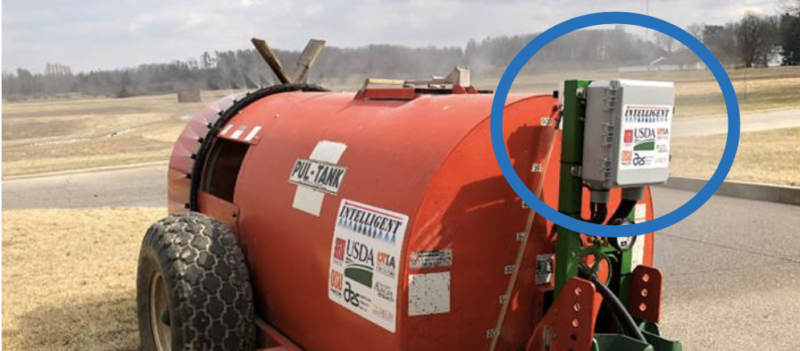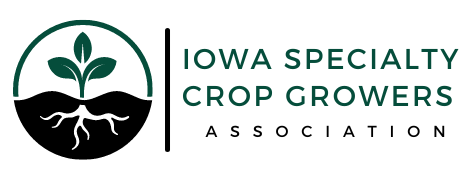
Hello commercial apple growers,
Have you heard of a cool new sprayer technology for apples? It could be the biggest change in apple spraying since the invention of the airblast sprayer.
This is the first blog from our new 2-state (Iowa and Ohio), 3-year (2020-2022), USDA (CPPM program) funded project on adapting a new-technology airblast sprayer to apple IPM in the Midwest.
The Intelligent Sprayer technology was developed by a USDA-ARS lab in Wooster, OH, led by Dr. Heping Zhu, an ag engineer.
For 2020, our plan was to do field experiments at Ames, Iowa and Wooster, Ohio, to find out how the new, LiDAR-based, airblast sprayer technology, called the Intelligent Sprayer, worked for control of diseases and insect pests on apples. Early trials on other kinds of tree crops showed impressive spray savings, so we want to find out how much pesticide we can save on apples without compromising control. COVID-19 has slowed us down a bit, but we’re pressing forward.
Backing up a minute – what’s LIDAR, and how does it change the way pesticide sprays go on? LIDAR is a technology that uses lasers to find out where objects (in this case, apple trees) are. It also shows how large the trees are and how dense the canopy is, so it can spray as efficiently as possible.
Current airblast sprayers haven’t changed much for decades. A pump discharges spray from nozzles located on the rear of the spray tank, and air jets push the spray through the canopy of the apple tree.
Standard airblast sprayers get the job done. But quite a bit of the spray misses the target and becomes drift. Off-target drift wastes money and can make neighbors unhappy.
How can a sprayer with LIDAR technology change the way pesticides are applied? At first glance, an Intelligent Sprayer looks pretty much like a standard airblast sprayer. In fact, they’re similar enough that a standard airblast sprayer can be retrofitted to make it into an Intelligent Sprayer.
But there are some major differences. The Intelligent Sprayer uses laser sensors (the LIDAR part) that are connected by an onboard computer to the spray nozzles. Spray only comes out of those nozzles when the laser detects a target and tells the computer where it is. In contrast, a standard airblast doesn’t adjust for tree size or shape, or even where there are gaps in a tree row.
Another innovative aspect of the Intelligent Sprayer is the nozzles. They are variable-rate and their flow is controlled individually by the computer. So that’s another aspect that enables the Intelligent Sprayer to deliver spray just where it’s needed.
Prototypes of the Intelligent Sprayer have been around for several years. When it was tried on nursery trees and tree crops like peaches, it gave the same level of pest and disease control as a standard airblast, but saved 30 to 80% on the amount of spray compared to the airblast. Bottom line: it did the same job with much less pesticide.
One point for clarification: the Intelligent Sprayer has nothing to do with concentrate spraying. In fact, the concentration of each pesticide in the Intelligent Sprayer’s tank is exactly the same as in the tank of the standard airblast. The savings with the Intelligent Sprayer comes in applying less spray volume to get the same IPM result.
Nobody has really taken a hard look before at the performance of the Intelligent Sprayer in apple orchards in the Midwest – against the pests and diseases we have to deal with. Our project will look at what happens when other IPM strategies like disease-warning systems – which can reduce the number of pesticide sprays – are added along with the Intelligent Sprayer. We’re looking to achieve consistent pest and disease control with the least pesticide, and the least amount of drift.
*Photo from ISU Smarter Spraying for Apples
Mark Gleason
mgleason@iastate.edu
– ISU Smarter Spraying for Apples


